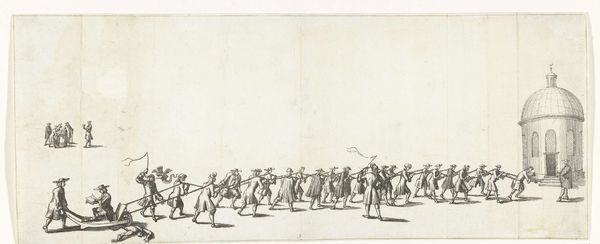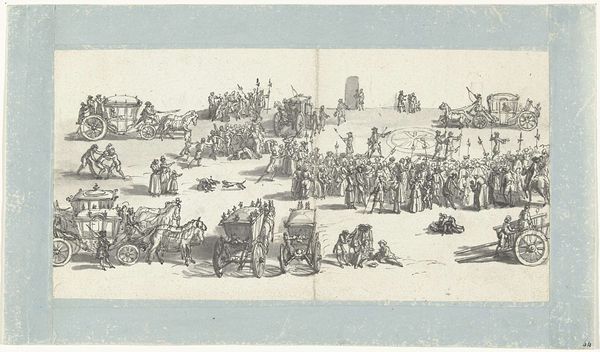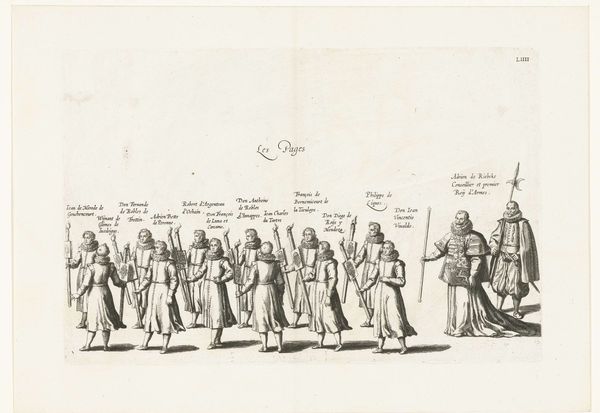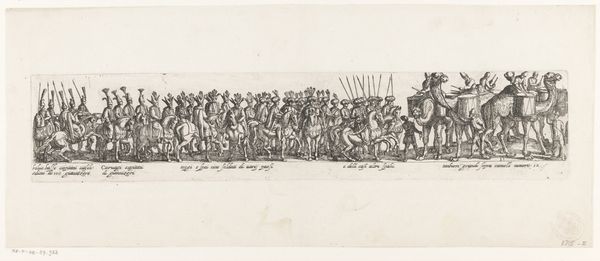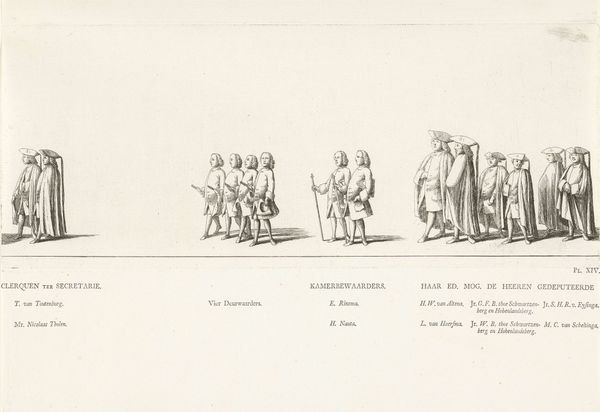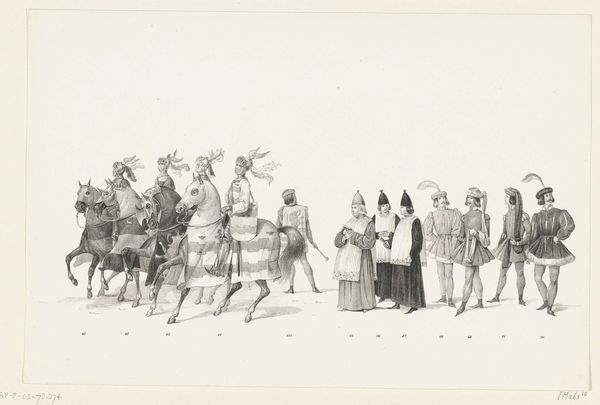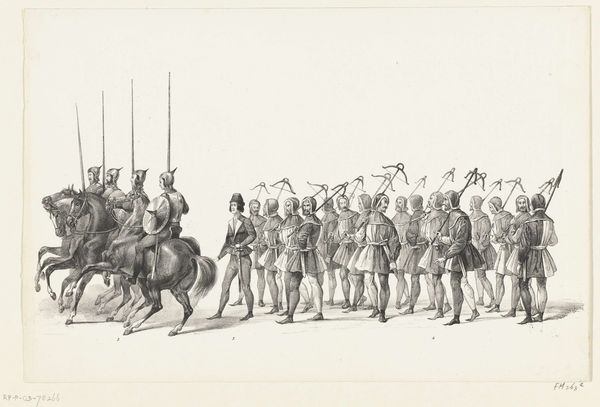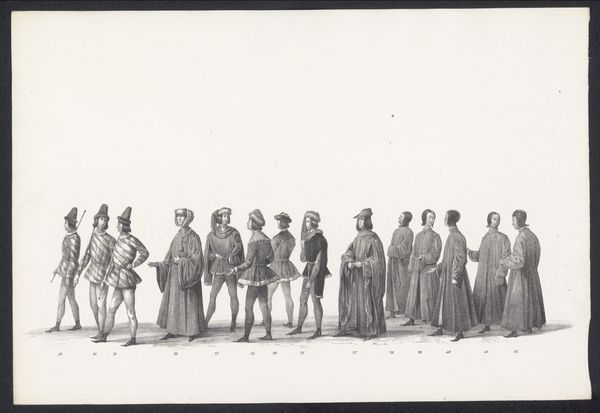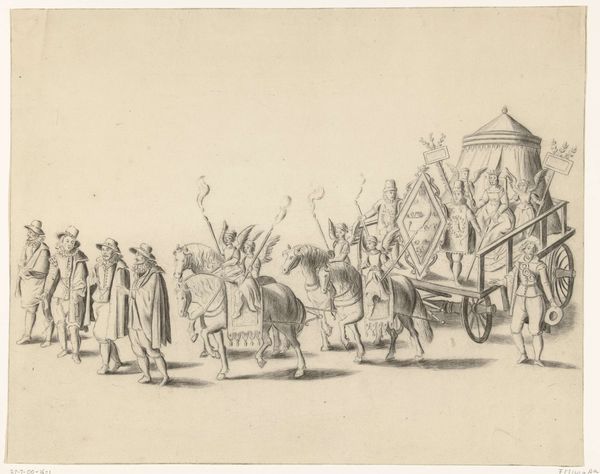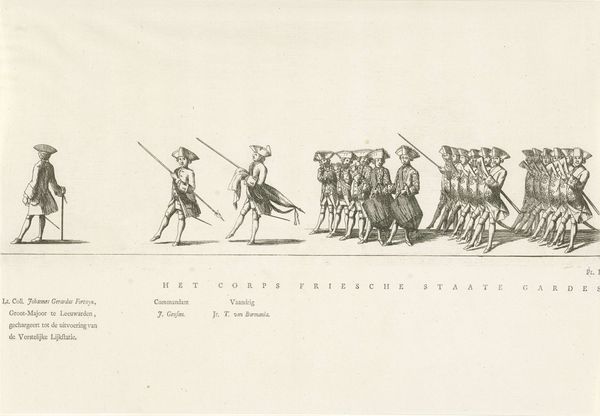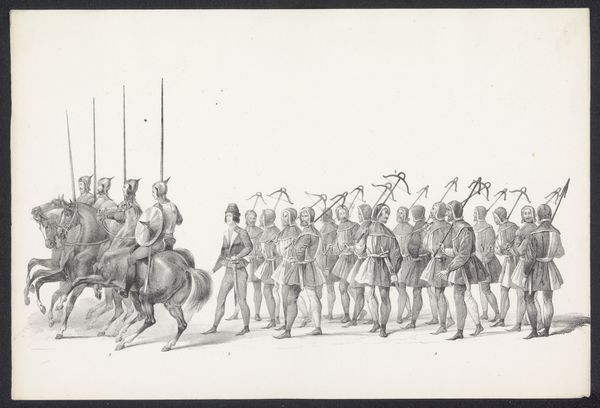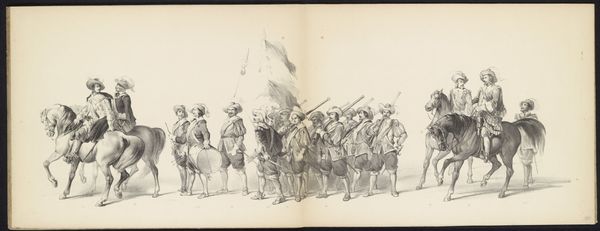
print, engraving
#
baroque
# print
#
old engraving style
#
group-portraits
#
line
#
history-painting
#
engraving
Dimensions: height 245 mm, width 379 mm
Copyright: Rijks Museum: Open Domain
Editor: Here we have "Funeral Procession of Archduke Albrecht (plate XXVIII)," a 1623 engraving by Cornelis Galle I. It’s got a very stark, formal feel, due in part to the meticulous line work of the engraving. I'm curious, what does this print convey to you? Curator: As a materialist, my gaze is drawn to the implications of its production. Engravings like this weren’t merely artistic expressions; they were commodities. Think about the labor involved, the dissemination of imagery to a broader audience, and the social context in which it was consumed. Editor: So, you’re saying it's not just about commemorating the Archduke? Curator: Precisely. The print serves as documentation, yes, but more importantly, it functioned as a tool to propagate power and project the grandeur of the Habsburgs. The very act of creating and distributing these prints speaks volumes about early modern European society and the burgeoning print industry. Editor: So, even in mourning, there's a level of manufacturing consent here? It’s about the controlled reproduction of an image and idea? Curator: Exactly. Galle's skillful rendering is integral, but to focus solely on aesthetic merit risks overlooking the economic and political realities woven into its production. What impact might the act of mass production have had on craftspeople, do you think? Editor: That's a really interesting consideration. Perhaps skilled laborers saw it as a dilution of the quality expected for their craft. Curator: Precisely! Consider the historical circumstances during the Baroque, and its emphasis on grandeur to highlight the opulence through meticulous methods like engraving. Editor: I had never really considered the economic and societal ripple effect from works of art like this! Curator: Seeing art in this way reveals connections between visual representation and material culture, urging us to consider the complex layers of production, consumption, and power that shape our understanding of art history.
Comments
No comments
Be the first to comment and join the conversation on the ultimate creative platform.
